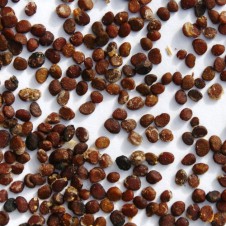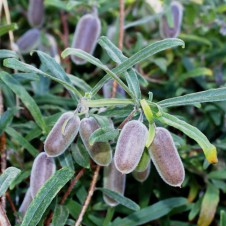General Description: A woody climber with narrow leaves and cream, tubular flowers, solitary, or in groups of three on slender, drooping stalks in leaf axils. New growth is soft light green and hairy. Leaf margins are often wavy, sometimes curved under.
Flowers and Fruit: Cream, tubular or bell-shaped, to 23 mm long. Petals are sometimes separated to the base. Flowers from September to January. Fruit is acylindrical, fleshy, green berry, to 20 x 10 mm.
Site Preference and Tolerances: They are easily grown in a cool, moist, semi-shaded position and are hardy enough to cope in full sun in cooler areas. Good drainage is essential.
Life Span: Medium (20 to 80 years)
Wildlife Value: Flowers are attractive to Eastern Spinebills and small fruit eating birds like Silvereyes enjoy the fruit. This native climbing plant can make a spectacular addition to any garden, providing stunning displays and, best of all, food, shelter and nesting sites for birds.
Other Values and Uses: Aborigines were known to eat fallen ripe fruits and to roast green fruit. The mature fruits are juicy, and have a flavour similar to stewed apples, this is why the early settlers called it the ‘Apple Dumpling Berry’. This is a soft climber which becomes bushier if grown in open areas and grows well under established trees. Climbers add another dimension to the garden by providing height, especially in limited areas and narrow walkways that are difficult to landscape.
Note:Billardiera mutabilis has recently been segregated from B. scandens. As result many of the records in this distribution may be those of the former.
Other Scientific Names: Billardiera scandens s.l.
Other Common Names: Apple Berry, Apple Dumplings, Changeable-flowered Billardiera, Climbing Apple Berry, Snot Berry
Germination Information: Getting this species to grow from seed can be difficult. It sometimes grows without treatment but this can take from 2 months to over a year.
Cold treatment at 4C for 2 months or sowing seed in winter could help. Our seed is stored in the fridge at this temperature so further treatment may not be necessary.


